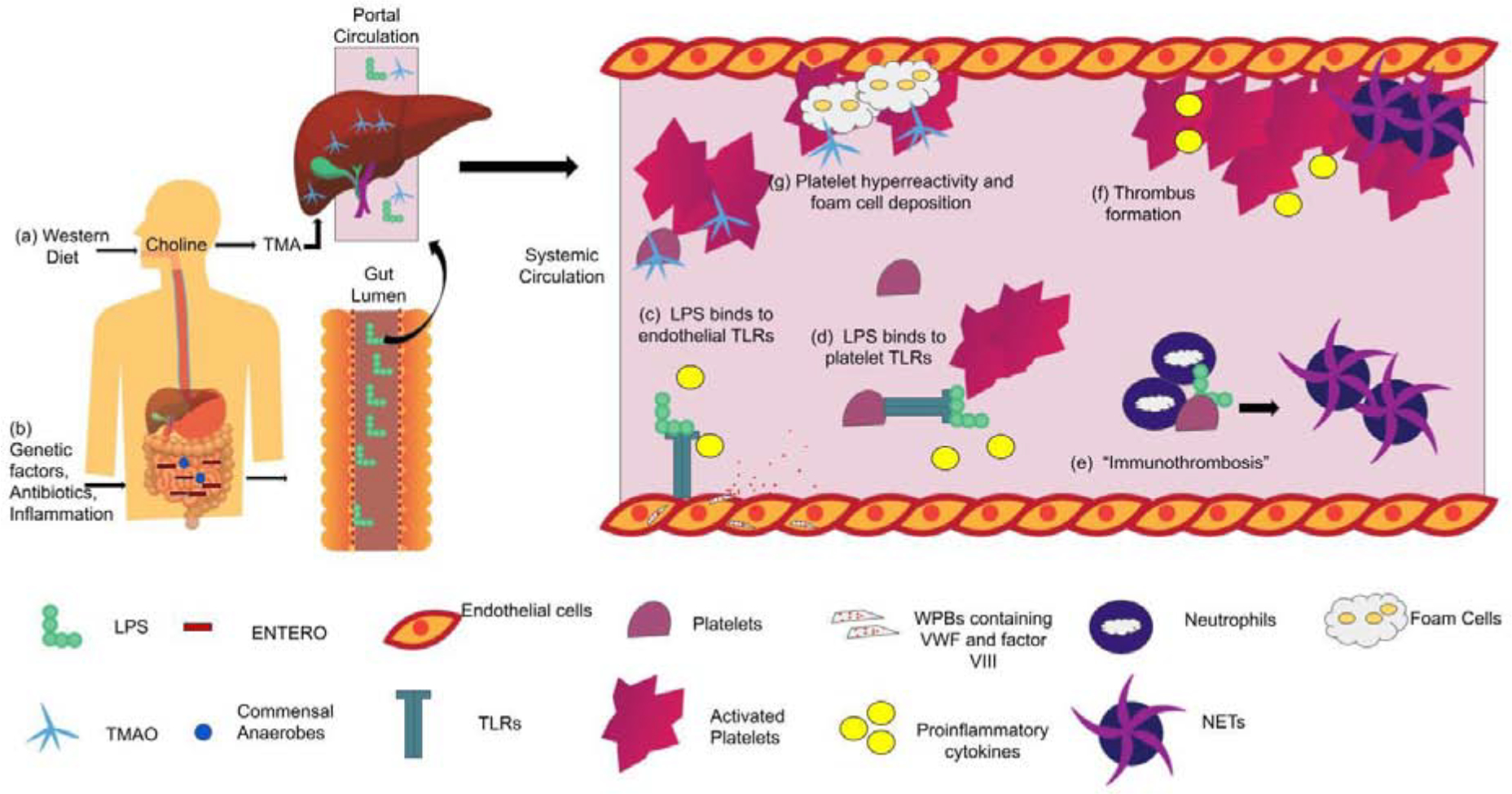Figure 1:

Proposed mechanisms of how the microbiome induces thrombosis
(a) Western diet are choline-rich which is metabolized to TMA by TMA lyases in the gut. TMA enter portal circulation in the liver where it is converted to TMAO and released into circulation.
(b) Presence of genetic and environmental factors lead to dysbiosis with expansion of ENTERO and decrease in microbial diversity. Increase in ENTERO leads to increase in LPS production in the gut lumen. LPS translocates through an impaired gut epithelial barrier into portal and then systemic circulation.
(c) LPS leads to activation of TLR4 on endothelial cells which leads to release of proinflammatory cytokines and exocytosis of Weibel palade bodies to release factor VIII and vWF.
(d) LPS binds to platelet TLRs leading to activation of platelets, release of alpha and dense granules and release of cytokines.
(e) TLRs also mediate platelet-neutrophil interactions and “immunothrombosis” by binding to neutrophils to increase formation of NETs, which can activate the contact factor pathway and contribute to aggregation.
(f) Platelet hyperreactivity, release of coagulation factors, NET formation and proinflammatory cytokines lead to thrombus formation.
(g) Upon entering systemic circulation, TMAO leads to platelet hyperresponsiveness and increases deposition of foam cells in the early steps in atherosclerosis.
